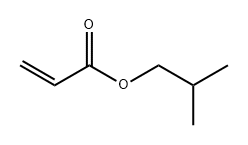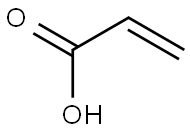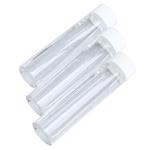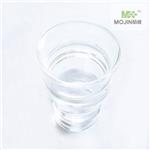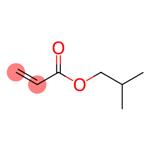Chemical Properties
Liquid.Contains 100 ppm monomethyl ether
hydroquinone as inhibitor.
Uses
Monomer for acrylate resins.
Uses
Isobutyl Acrylate is used in of acrylic acid metal salt resin with good antifouling performance.
General Description
A clear colorless liquid with an acrid odor. Flash point 86°F. Less dense than water. Vapors irritate eyes and respiratory system. May polymerize exothermically if heated or contaminated. If polymerization takes place inside a container, the container may rupture violently.
Air & Water Reactions
Highly flammable. Slightly soluble in water
Reactivity Profile
Isobutyl acrylate is an ester. Esters react with acids to liberate heat along with alcohols and acids. Strong oxidizing acids may cause a vigorous reaction that is sufficiently exothermic to ignite the reaction products. Heat is also generated by the interaction of esters with caustic solutions. Flammable hydrogen is generated by mixing esters with alkali metals and hydrides. Polymerizes readily in the presence of heat and light generating much heat; reacts with strong oxidants. REF [Handling Chemicals Safely, 1980. p. 235].
Hazard
Flammable, moderate fire risk.
Health Hazard
Moderate toxicity when swallowed. Contact with the eyes causes minor irritation no worse than that caused by hand soap.
Fire Hazard
HIGHLY FLAMMABLE: Will be easily ignited by heat, sparks or flames. Vapors may form explosive mixtures with air. Vapors may travel to source of ignition and flash back. Most vapors are heavier than air. They will spread along ground and collect in low or confined areas (sewers, basements, tanks). Vapor explosion hazard indoors, outdoors or in sewers. May polymerize explosively when heated or involved in a fire. Runoff to sewer may create fire or explosion hazard. Containers may explode when heated. Many liquids are lighter than water.
Flammability and Explosibility
Flammable
Chemical Reactivity
Reactivity with Water No reaction; Reactivity with Common Materials: No reactions; Stability During Transport: Stable; Neutralizing Agents for Acids and Caustics: Not pertinent; Polymerization: Polymerizes upon exposure to heat; uncontrolled bulk polymerization can be explosive; Inhibitor of Polymerization: Methyl ether of hydroquinone: 10 - 100 ppm; Hydroquinone: 5 ppm.
